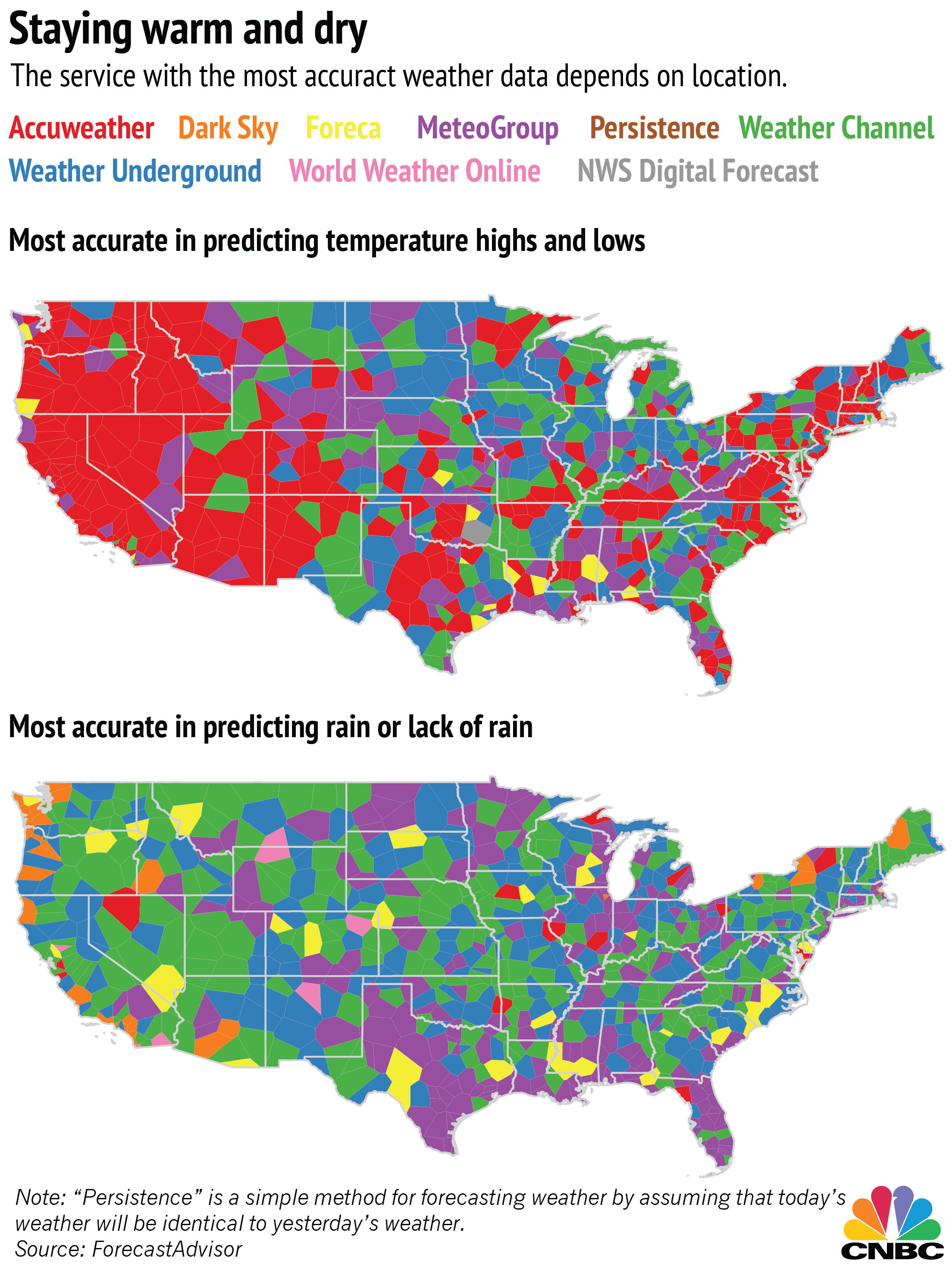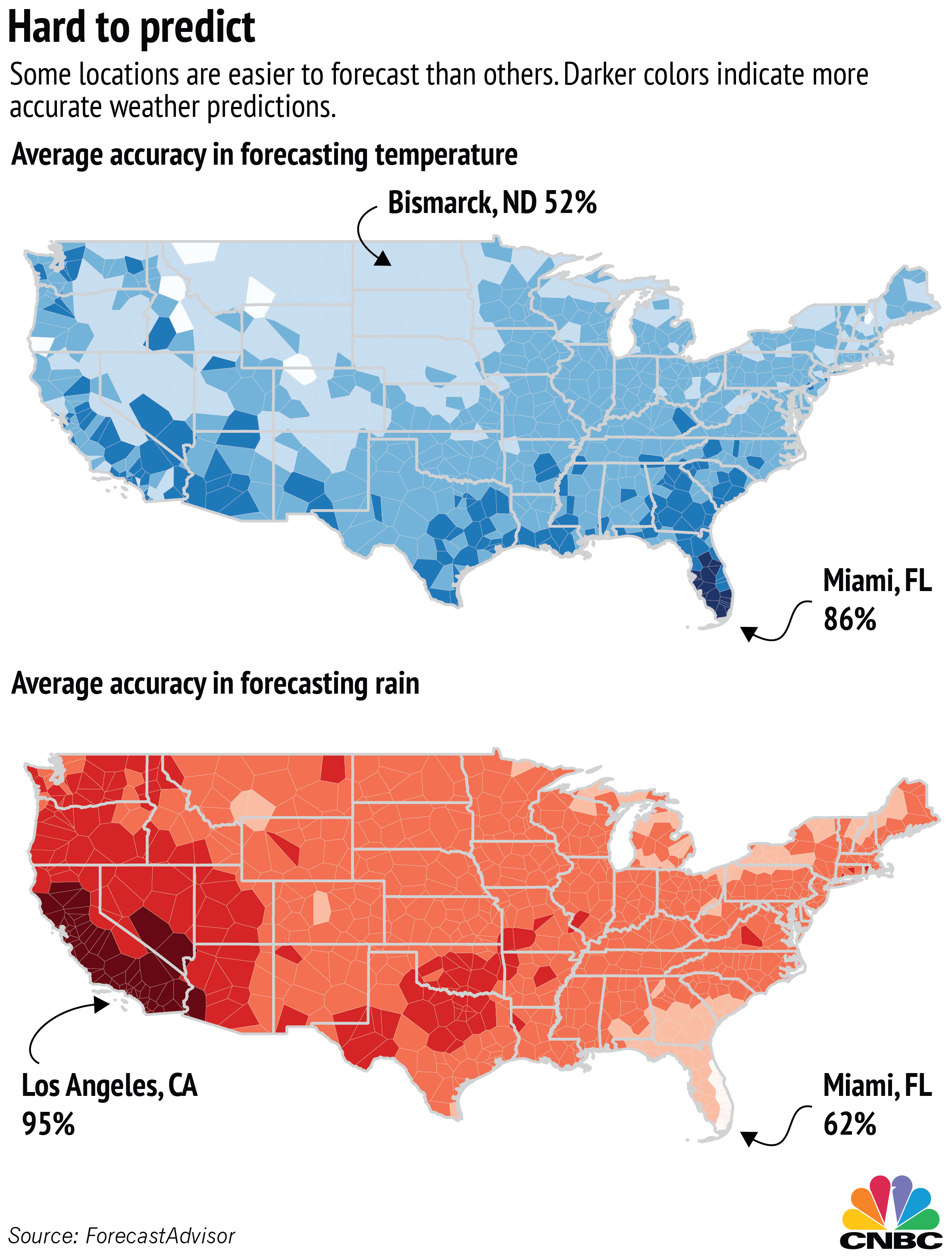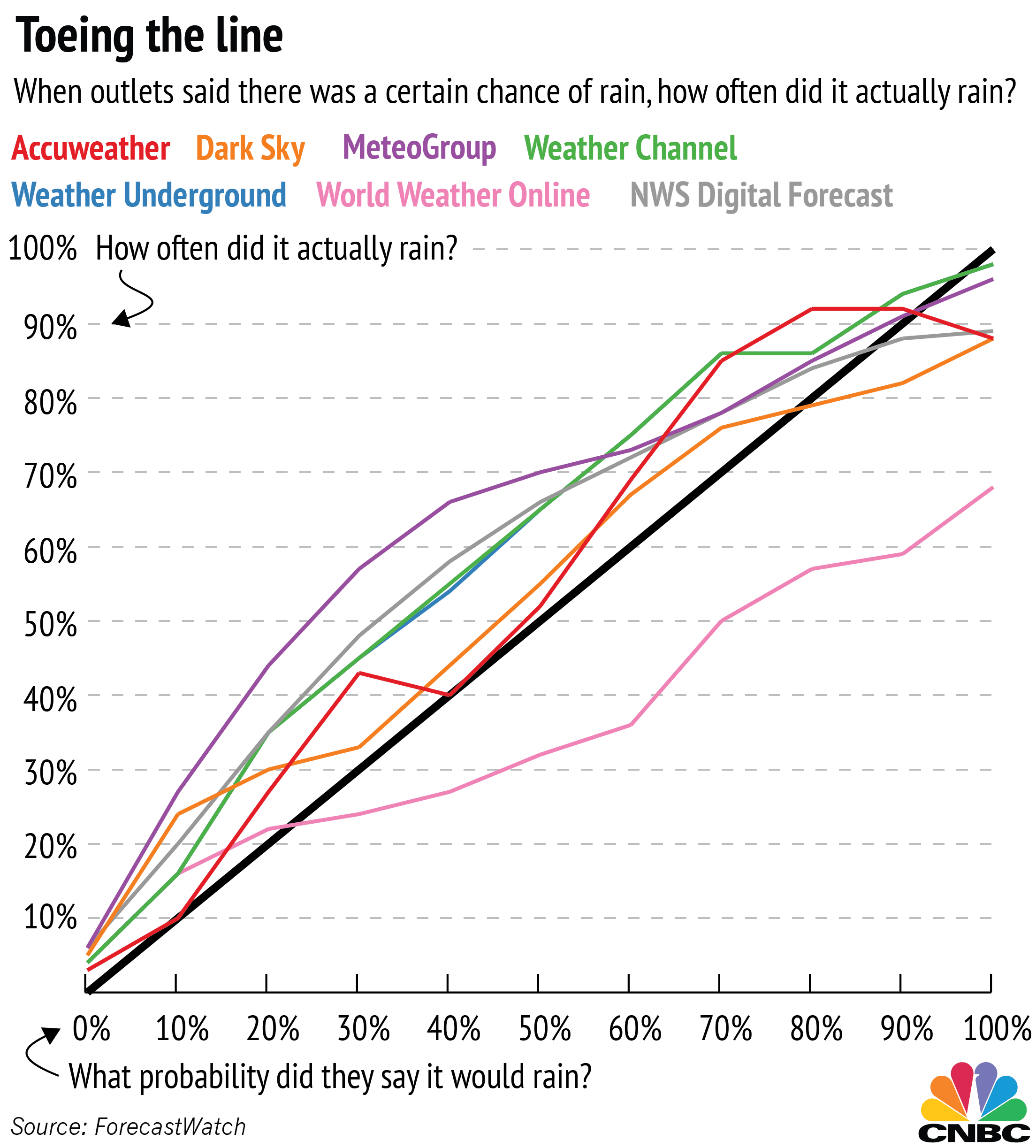There are plenty of weather apps out there, but not all will keep you warm and dry.
Major weather services can range in their ability to predict rain and temperatures in a certain place by more than 25 percentage points, so picking the right app could make all the difference.
CNBC looked at how eight services predicted temperatures and rain at nearly 800 weather observations stations across the country, based on data from ForecastAdvisor (click there to enter in your own zip code). At the very top overall were Weather Underground and the Weather Channel, two brands owned by the same company, IBM.
When it comes to predicting whether it will rain one to three days ahead of time in 2015, Weather Underground and The Weather Channel have the highest average accuracy across the country at almost 84 percent. (The two apps sometimes give different results based on how a user's location is interpreted, but the underlying source is identical, the company said.)
The two apps came out as the most accurate options for predicting rain in a little over 60 percent of weather stations, which means that one of the other apps we looked at is still best in the other 40 percent. So the best app depends mostly on where you are: If you're in Miami, MeteoGroup is best overall. If you're in Los Angeles and worried about rain, stick with Dark Sky.
The Weather Channel and Weather Underground are again at the top of the stack nationwide for forecasting high temperatures, but AccuWeather far surpasses all rivals in its ability to predict low temperatures to within three degrees. That's in line with another analysis that found that AccuWeather is the most accurate temperature forecaster globally.







